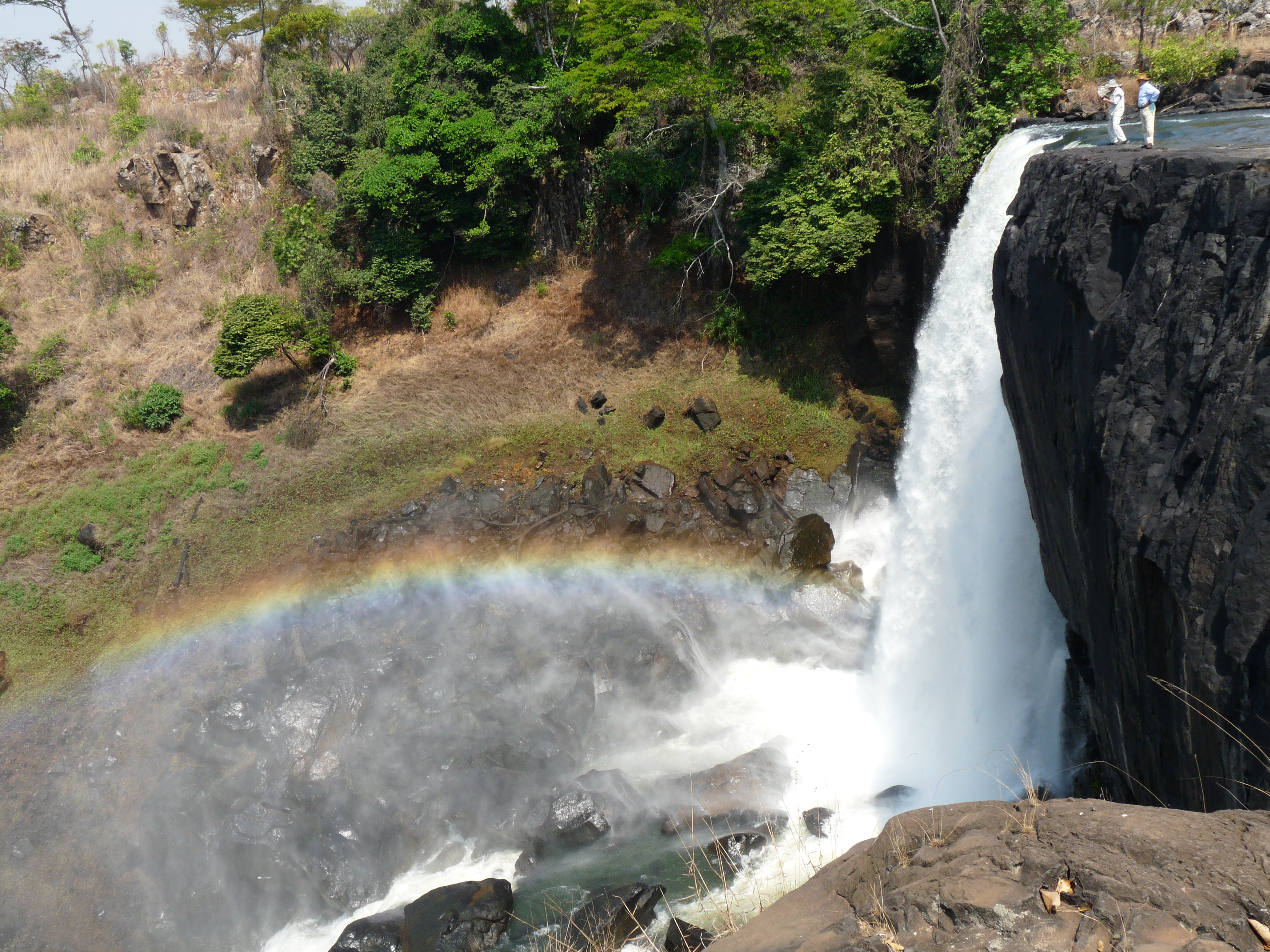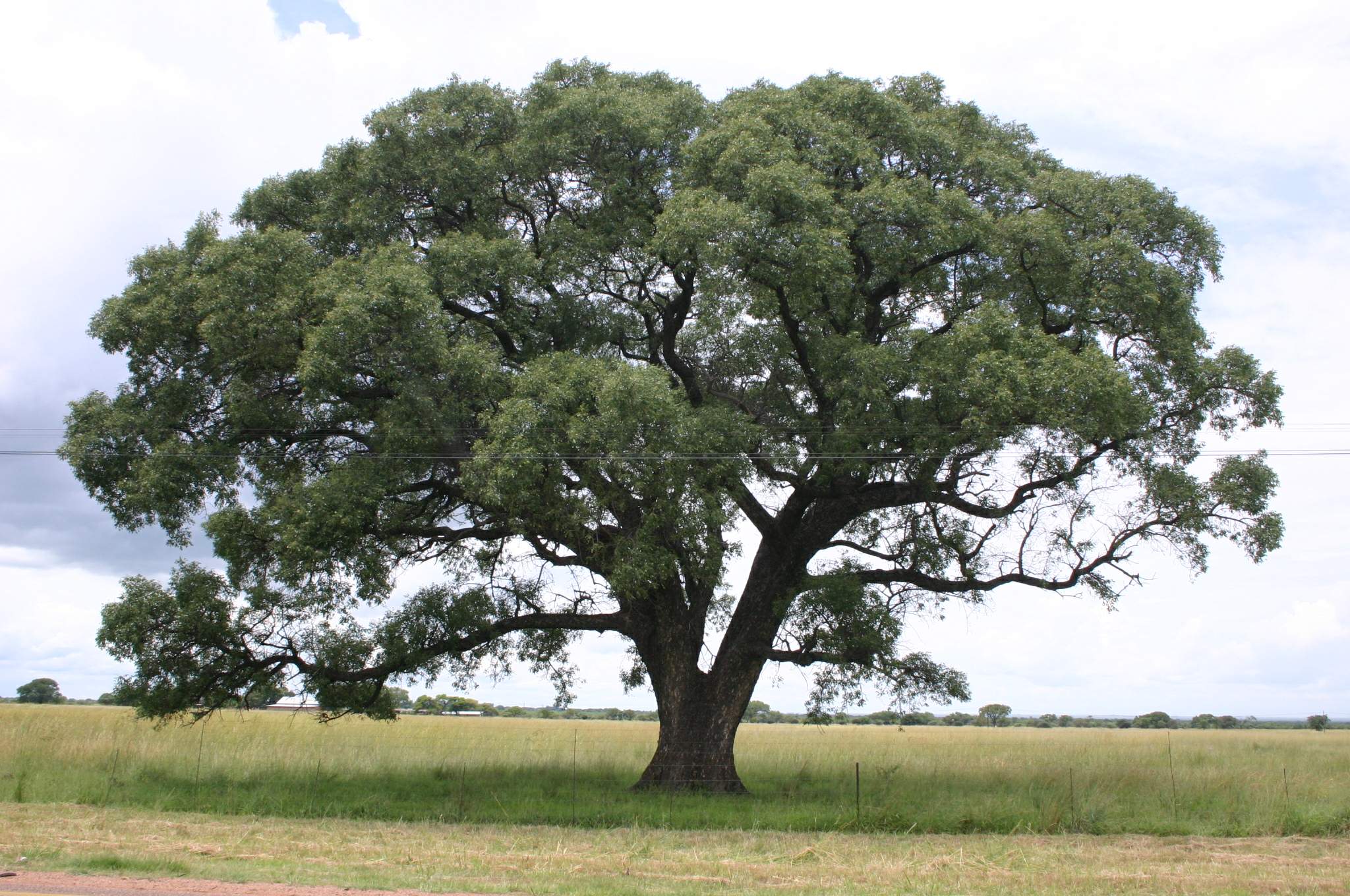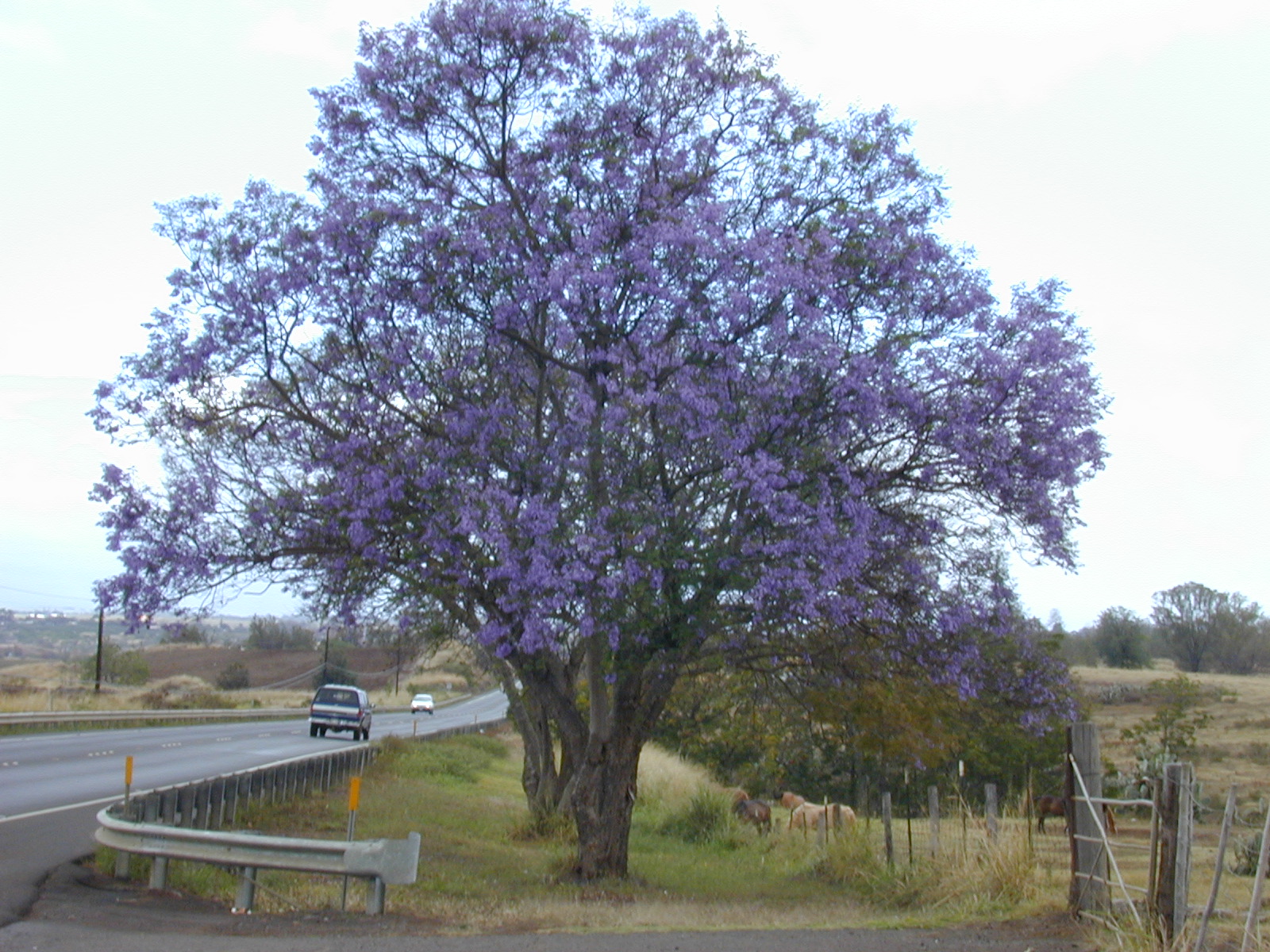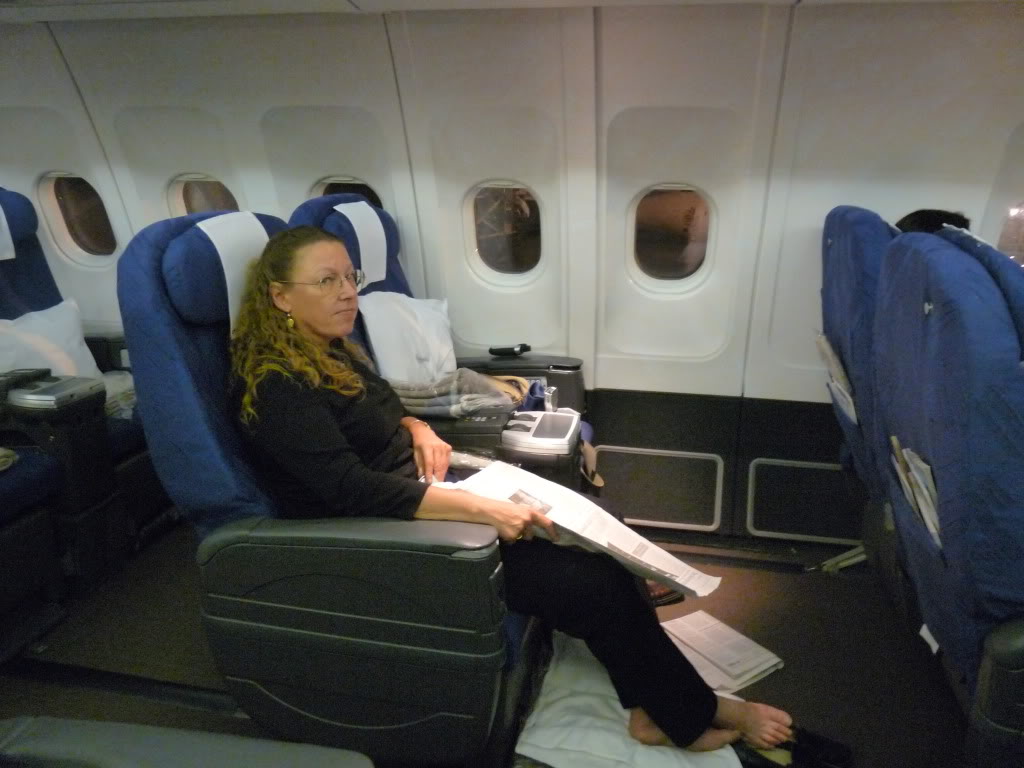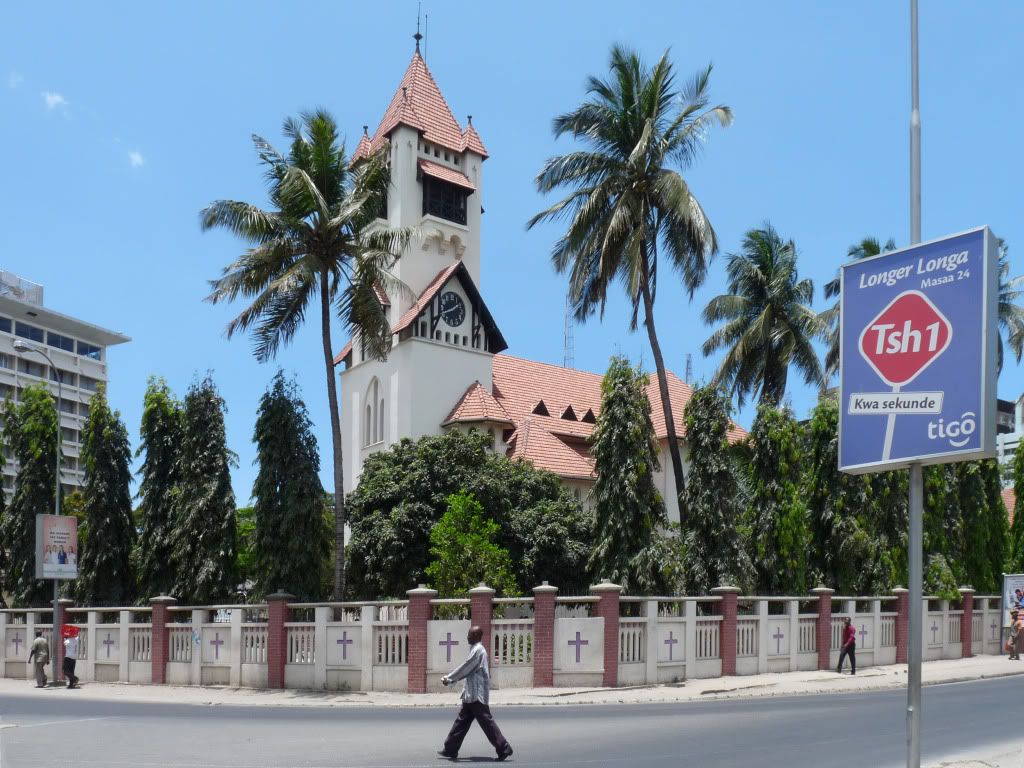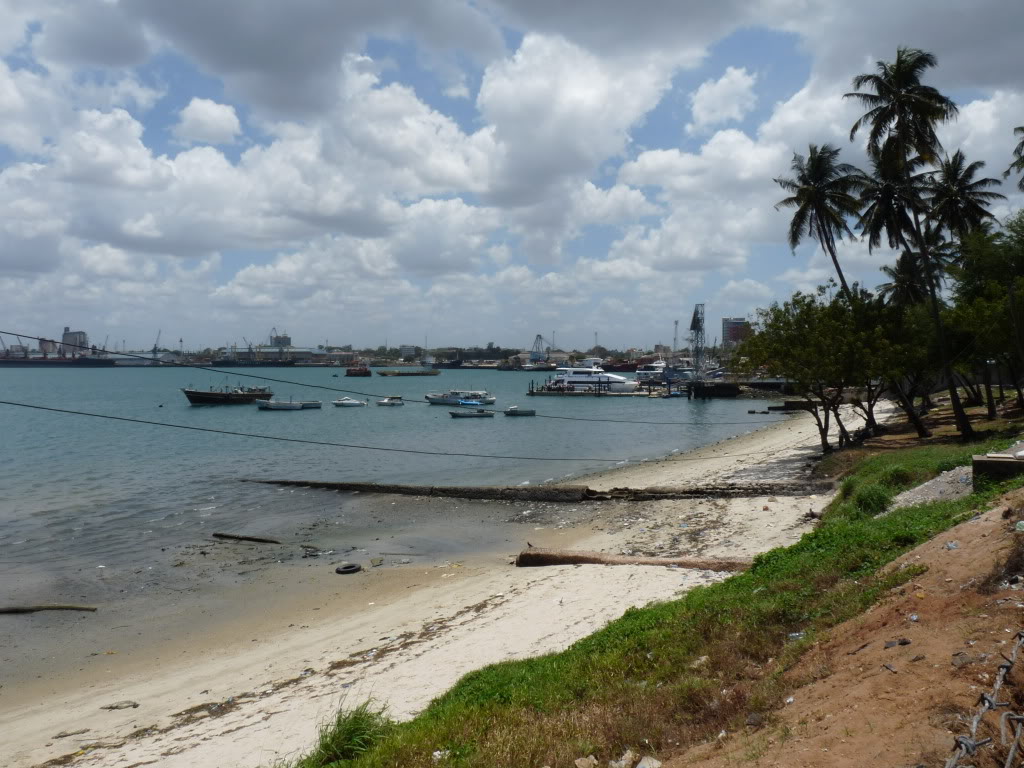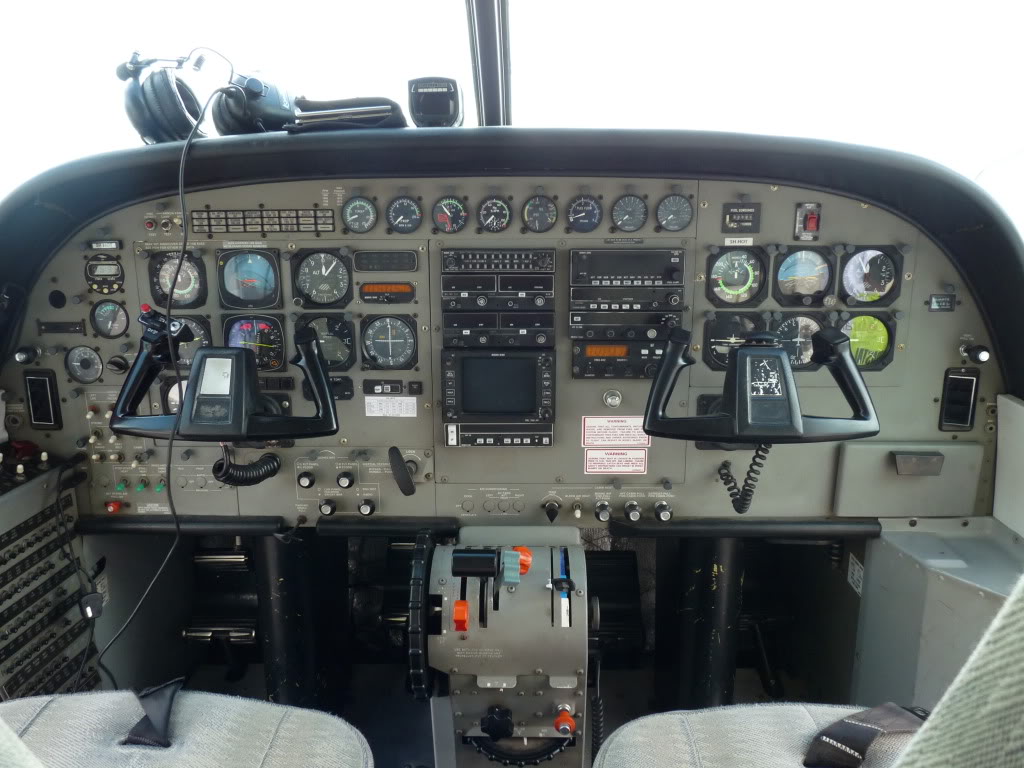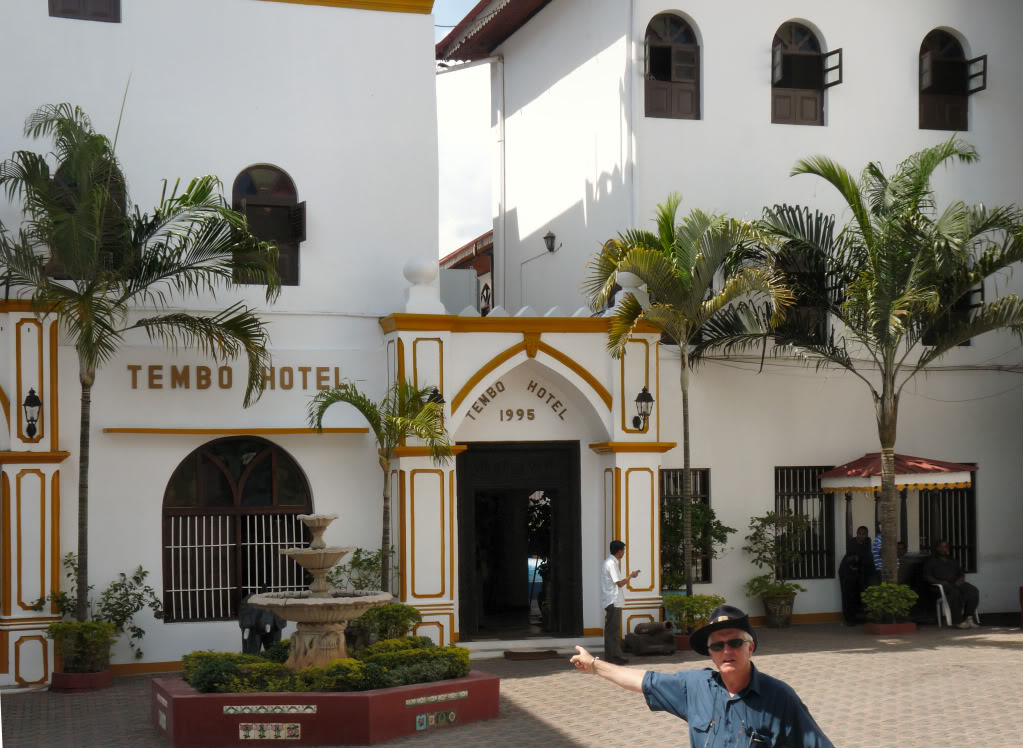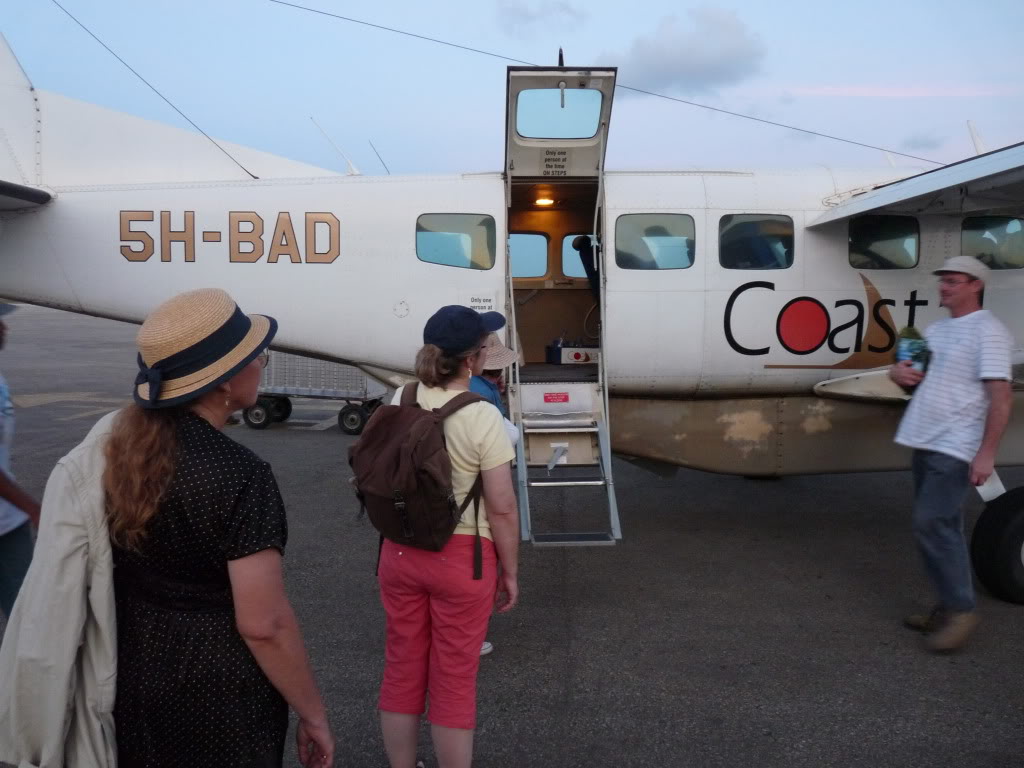Gehört zu: Afrika
Siehe auch: Reisen, Google Fotos
Benutzt: GPS-Tracks auf Open Street Maps, Fotos von pCloud
12.10.2009 Tag 17 (Weiter: Tag 18 zurück: Tag 16)
Reisen: Tag 17: Dar Es Salaam – Abreisetag
Letzter Tag in Dar Es Salaam.
Abends um 21:20 soll es mit der Swiss über Nairobi und Zürich wieder nach Hamburg gehen.
Auschecken ist um 12:00 Uhr, was wir mit etwas Hin und Her auf 17:00 Uhr verlängern können (als Kompensation für den verpassten ersten Tag).
Der Bell Captain des Hotels hatte uns für 10:30 einen Guide organisiert, der uns ca. 3 Stunden durch die Stadt führen soll.
Wir sehen von Dar eine ganze Menge, aber der Guide weiss nicht sehr viel über die Hintergründe und es ist ganz schön anstrengend so am Montag mitten durch die wuselige Stadt zu laufen.
Umjoa House
Abbildung 1: Umjoa House (pCloud: Afrika_P1100351.jpg)
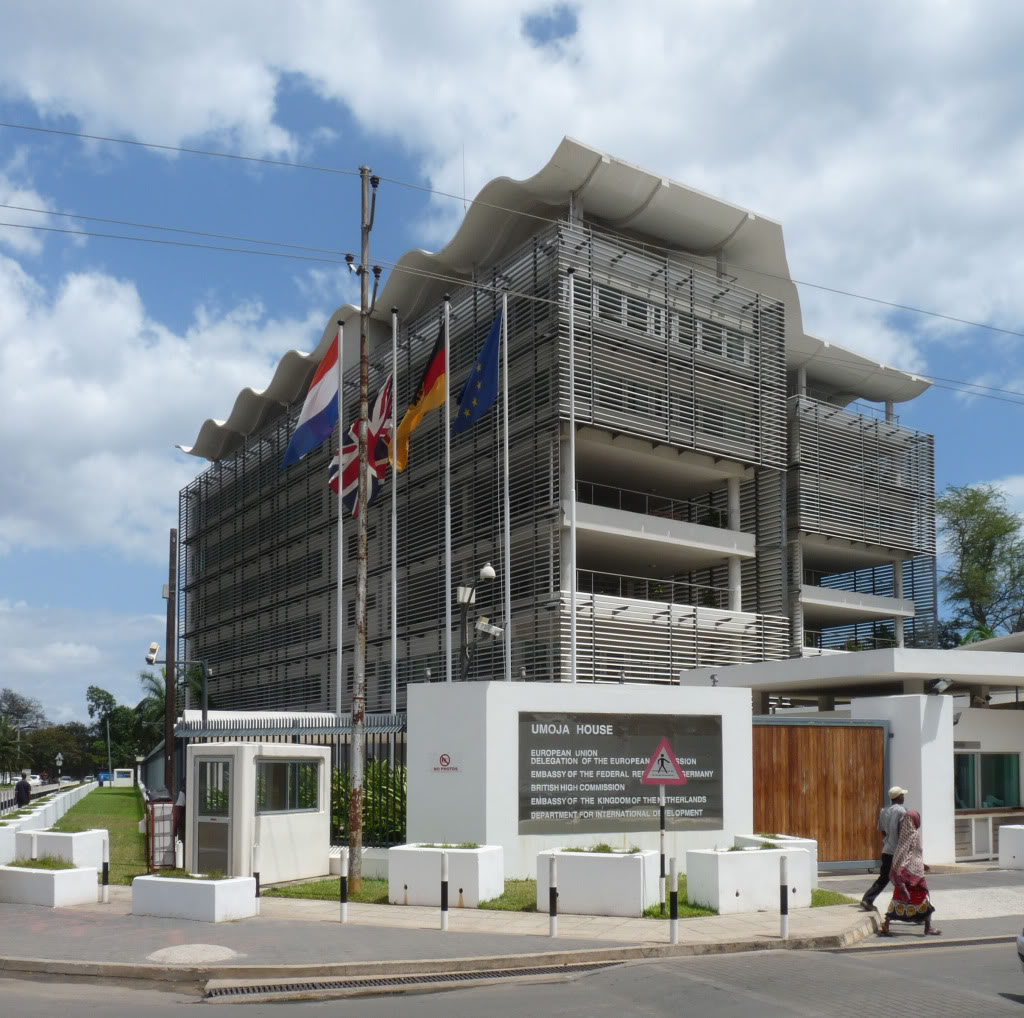
Afrika Dar Es Salam Umjoa House
Das Umjoa House wurde für die Vertretung der Europäischen Union gebaut und beherbergt auch die Botschaften von Deutschland, den Niederlanden, Großbritannien etc.
National Museum
Abbildung 2 und 3: National Museum (pCloud: DK_20091012_1100354.JPG und DK_20091012_1100372.JPG)

Afrika Dar Es Salaam: National Museum |

Afrika 2009 Dar Es Salaam |
Das Nationalmuseum von Tanzania hat einen etwas merkwürdig aussehenden Haupteingang. Das liegt an den zur Zeit stattfindenden Bauarbeiten. Viele interessante Dinge, aber manches auch sehr schlicht gemacht.
Link : http://www.houseofculture.or.tz
Karimjee Hall
Abbildung 4: Karimjee Hall (pCloud: Afrika_P1100387.jpg)

Afrika 2009 Dar Es Salam: Karimjee Hall
1923 erbaut. Nach der Unabhängigkeit 1961 Sitz des “House of Parliament”. Hier wurde auch Julius Nyerere als erster Präsident vereidigt (1962).
Das Parlament (National Assembly – die “Bunge”) wurde 1996 in die neue Hauptstadt Dodoma verlegt. Heute (2009) dient die Karimjee Hall als Veranstaltungsort für Kongresse usw.
Botanischer Garten
Abbildung 5: Botanischer Garten (pCloud: DK_20091012_1100390.jpg)
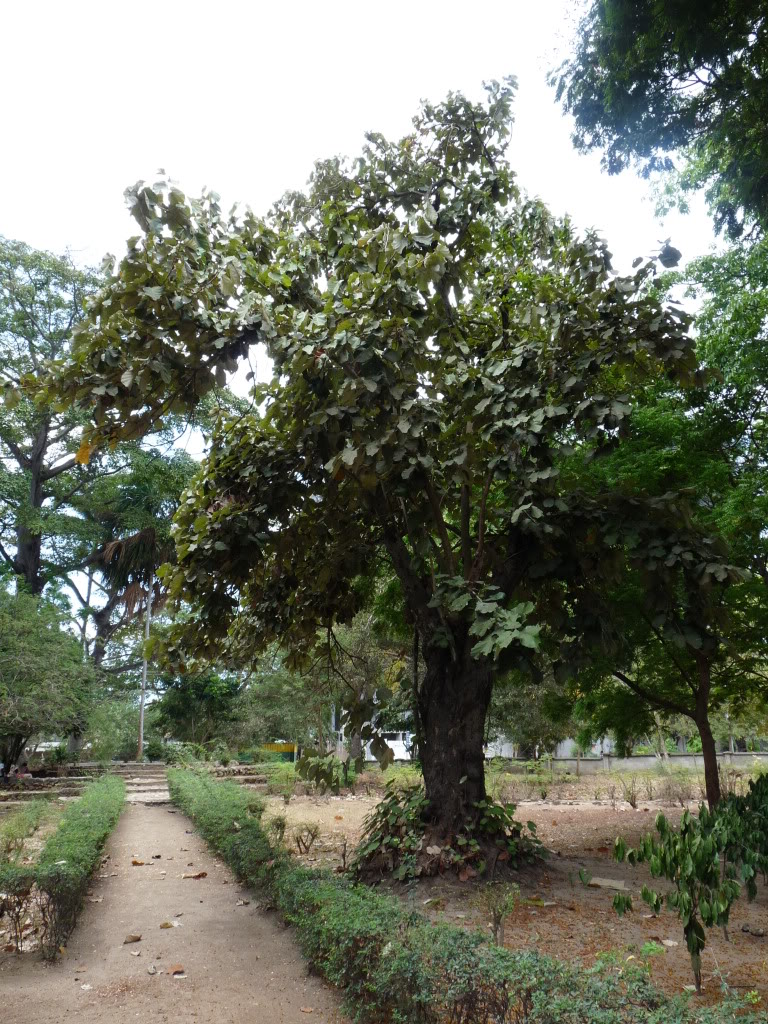
Afrika 2009 Dar Es Salaam: Botanic Gardens
Gebäude aus der Kolonialzeit
- Old City Council Hall von 1903 – Sokoine Drive 18, Ecke Morogoro Road
- Old Boma – Sokoine Drive 17, Ecke Morogoro Road – ERbaut 1895-1897 als Amtssitz der deutschen kolonialen Bezirksverwaltung
- Lutherische Kirche (1998)
- St. Joseph (1897-1902 erbaut)
- Ocean Road Hospital 1897
- State House – Erbaut 1887 als Gouverneurs Palais, von den Briten zerstört und 1922 als “State House” neu gebaut
- Link: Deutscher Gouverneurspalast Dar Es Salaam
- Department of Land and Survey – Kivukoni Front
- Magistrate Court – Kivukoni Front
- Hauptbahnhof
- Teile des National Museum
- Einige Häuser in der Nähe des National Museum (und Botanischer Garten) zu erkennen an den Dächern mit roten Ziegeln
Fischmarkt
Abbildung 6: Fischmarkt (pCloud: DK_20091012_1100402.jpg)
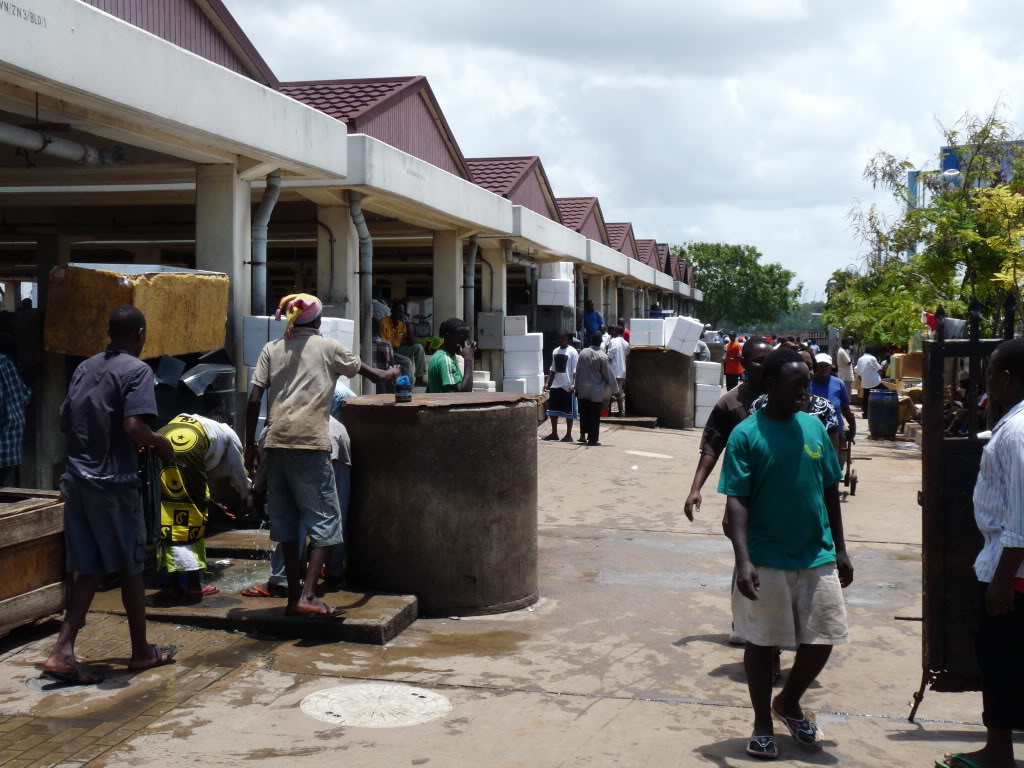
Afrika 2009 Dar Es Salaam: Fish Market
Central Train Station
An der Central Train Station haben wir genug und nehmen ein Taxi zum Hotel.
Abbildung 7: Central Train Station (pCloud: DK_20091012_1100421.jpg)
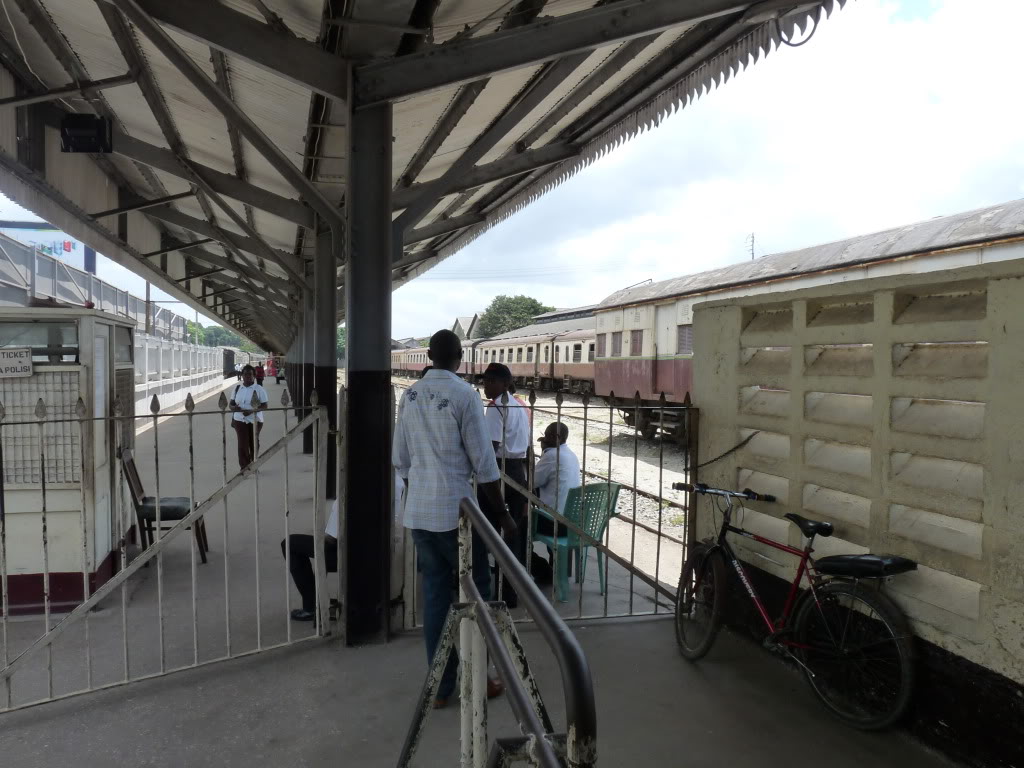
Afrika 2009 Dar Es Salaam: Central Train Station
KML File: 20091017035443-4ad9a273b112f8.11544121.kml
GPX File: GPS_20091012_0726 Daressalam Walking Tour.gpx
Der GPS-Track auf OSM:
Abbildung 8: GPS-Track der Dar Es Salaam Walking Tour (GitHub&OSM: GPS_20091012_0726 Daressalam Walking Tour.gpx)
Duschen und einen Drink an der Poolbar. Vorher müssen wir die Magnetstreifen der Zimmerkarten noch neu kodieren lassen, denn die hatten immer noch 12:00 als Ende-Zeit.
Koffer fertig packen und noch eine Pizza zu zweit am Pool, dann ist die Zeit herum: Beim Auschecken an der Rezeption steht bei den Nebenkosten ein Punkt doppelt drauf. Das Hotel ist aber entgegenkommend und streicht diesen Posten.
Abbildung 9: Hotel Lobby (pCloud: DK_20091012_1100435.jpg)

Afrika 2009 Dar Es Salam: Hotel Moevenpick
Nun müssen wir auf unseren Rovos-Transfer um 18:30 zum Flughafen warten. Zur versprochenen Zeit kommt aber von Rovos kein Mensch. Um 18:40 bestellen wir ein Taxi auf unsere Kosten (30.000 Shilling). Es ist ein gewaltiger Stau auf der Ausfallstraße zum Flughafen. Wir schaffen es aber ganz gut in ca. 1 Std und einer Viertel.
KML File: 20091014063611-4ad5d3cb19b074.53021406.kml
GPX File: GPS_20091012_1545 Taxi Hotel Airport.gpx
Der Taxi Track auf OSM:
Abbildung 10: GPS-Track vom Hotel zum Flughafen (GitHub&OSM: GPS_20091012_1545 Taxi Hotel Airport.gpx)
Ein Gepäckträger bringt unsere beiden großen Koffer zum Business Checkin der Swiss. Wir bekommen die Boardkarten und eine Einladung in die Tazaira Lounge.
Im Flughafen gibt es überhaupt keinen Raucherbereich, das findet Monika überhaupt nicht gut und kann nach einigem Hin und Her eine Speziallösung finden (Foto).
Der Flughafen hat nur einen Abflug-Saal vor dem noch mal ein “Final Security Check” stattfindet.
Das Einsteigen in die Swiss-Maschine (Airbus 330-200) verzögert sich um ca. 20 Minuten. Unsere Sitze sind 10A und B. Die Abmessungen sind für die Business-Klasse OK, aber die Ausstattung der Sitze ist deutlich schlechter als auf dem Hinflug mit der Lufthansa 747.
